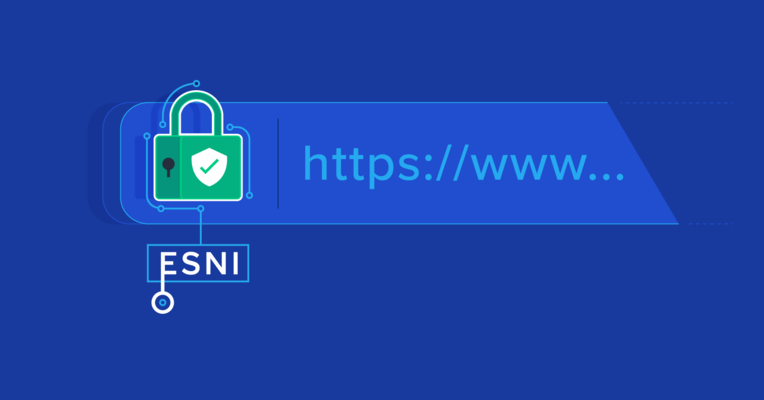Are Full-stack Developers in Demand?
Interest in hiring full-stack developers is at an all-time high. These versatile professionals claimed the top spot in the 2025 Stack Overflow Developer Survey’s list of the most popular development roles, with 27% of respondents worldwide identifying as full-stack developers, nearly twice as many as those who selected the second-most popular role. The demand for these generalist programmers is driven by their wide range of skills and ability to contribute to various application development tasks.
Despite their widespread popularity, finding the right developer for your company can be challenging. Identifying candidates with the right mix of skills, experience, and the ability to manage both front-end and back-end development efficiently is not an easy task. The breadth of knowledge required, from coding and designing user interfaces (UIs) to managing databases and server infrastructure, makes the full-stack developer hiring process complex and competitive.
This guide will equip you with the knowledge needed to navigate these challenges. We will discuss the various types of engineers, the specific skills and experiences to look for, and practical advice on how to structure the process when hiring a full-stack developer. By the end of this guide, you will be well prepared to find and hire the ideal developer for your needs.
What Attributes Distinguish Quality Full-stack Developers From Others
What is a full-stack developer? In a broad sense, these programmers are specialists capable of creating and maintaining all the components necessary to run a web or mobile application. That includes front- and back-end layers as well as all DevOps activities. An experienced developer is a person who is able to see and develop a big-picture solution. Quite often, they use their technical skills to help put together and coordinate pieces delivered by more specialized developers.
Developers will vary in two main ways: in their knowledge of a specific technology stack and in their mastery of specific layers of that stack. Examples of widely popular web technologies are LAMP (Linux, Apache, MySQL, and PHP), MEAN (MongoDB, Express, Angular, and Node), Ruby on Rails, ASP.NET, and the MERN stack (MongoDB, Express, React, and Node). Frameworks like Django or React often play a significant role in these stacks.
Keep in mind that generalist developers are not specialists in everything. Rather, they have general working knowledge of all required technologies and essential practices, such as version control with Git. They surely will be capable of delivering the required work; you just need to be aware that they will need to check the documentation for certain functionalities or do a bit of additional research from time to time, perhaps more often than a specialist would.
Quite often, generalist developers will have one skill that is stronger than others in their skill set: Some professionals might be more experienced with front-end development, while others will be more efficient in working with the back end.
You shouldn’t be discouraged by this. It’s a natural thing. Rest assured that skilled developers can always improve their technical knowledge and learn new things.
Full-stack Layers
When it comes to a web application stack, we can distinguish three main components: Front-end and back-end layers, as well as DevOps. All three of them are vital to most web solutions.
Still, some projects do not require front-end skills because they only provide an API to use. Others don’t require back-end development because they are single-page applications (SPAs) or static pages. Even DevOps support is not always required, considering the availability of managed hosting solutions.
A good developer will guide you through your project requirements and provide you with the needed components while skipping the unnecessary ones.
The Front End
The front-end layer relates to all the elements you can see visually, including the user interface. In general, it uses three basic client-side technologies to create a rich user experience: HTML for structure, CSS for style, and JavaScript (with jQuery) or TypeScript for logic.
To identify a candidate with strong front-end skills, examine their previous work for websites that are both visually appealing and perform efficiently. Visual design is not the end of the story. Professionals you hire need to know how to make the visual side of things not only look great, but also run without glitches. User interactions should be smooth and free of problems. Users are prone to ditching sites and apps that run slowly or inconsistently and are not user-friendly. Seek developers with experience in Angular, Vue.js, and React.js, as these frameworks are popular for creating dynamic and efficient UIs. React Native brings the functionality of React to mobile development. In addition, libraries like Bootstrap and Tailwind can streamline the development of user interfaces and custom CSS components.
If you are building an SPA, the front end is separated from the back end on a structural level. For SPAs, if you already have a back-end API, the whole application can be created using only front-end technologies.
Front-end skills are easier to evaluate than back-end skills because the front end is the part of the stack that end users interact with. The front end is the most visible part of the web application, and its design and functionality can be evaluated by simply using it.
The Back End
The back-end layer refers to all of the components that are working on a server. They are often invisible to the end user, yet no advanced application can work without them. Popular backend technologies include languages like PHP with the Laravel framework, Java with Spring, and Ruby on Rails, in addition to the query language SQL and databases such as MySQL, PostgreSQL, and MongoDB.
Sometimes the back end effectively functions as an API service, responding to each query from the front end with text messages. In other cases, the back end does “server-side rendering”—pre-integrating dynamic data with front-end HTML instead of just sending raw data for the front-end JavaScript to add to the page itself.
Either way, the back-end layer generally takes full responsibility for business logic, as well as storing objects in a database and providing caching.
Verifying back-end skills can be more challenging because they’re often much more technical. When evaluating back-end skills, seek proper API design and documentation, correct endpoint behavior, and appropriate data storage and database design schemes. In addition, the back-end languages should match what is currently being used in the project. You might need some help to verify these details if you lack the required expertise.
DevOps
Last but not least, we have DevOps activities: All the actions required to acquire and manage servers, deploy and update applications, and scale up or scale out the capabilities of the system.
Professionals handling this layer are also responsible for creating and managing databases, version control systems like GitHub, caches, cloud storage, and proprietary cloud APIs. In a broad sense, DevOps skills can be assessed by looking at an individual’s experience with administering servers, scaling systems, and managing cloud services, especially from the big three providers, AWS, Azure, and Google Cloud.
You can check if they have previously handled the autoscaling of systems, automatic monitoring of multiple servers, automatic deployment of clusters, etc. In general, these types of experiences are easiest to acquire while working for large enterprises. They handle far larger amounts of traffic and have larger budgets for their operations, spending millions of dollars each month just on servers.
Generalist vs. Specialized Developers
You might wonder if you should hire dedicated developers or instead hire a few specialists to handle the front-end and back-end development separately. Some organizations claim that true generalist developers don’t exist—that no single individual is capable of the extensive knowledge needed for full-stack development.
Is that claim true? Not really: According to a StackOverflow survey, 33.48% of developers consider themselves full-stack web developers. However, despite their broad knowledge of all stack layers, they usually excel more in specific areas.
The companies that claim these talented developers don’t exist are motivated to do so because they sell technical services themselves. They don’t want you to hire a single developer when you can hire multiple experts for each layer, even if that’s inappropriate for your development project.
Let’s break down certain circumstances when you should hire a developer and when it is better to hire specialists in certain areas.
When to Hire Full-stack Programmers
When You Are Just Starting Out
It’s a common practice to start a new web project with a single dedicated developer. They can create solutions from scratch and lay out all application components where they need to be, creating basic software architecture.
Build your in-house team on this foundation, gradually adding specialized developers as needed. This approach is especially beneficial for startups launching new projects.
Nonetheless, you should always have one developer overseeing the entire software development process and coordinating work progress in all areas.
When You Need a Technical Lead
It’s a good idea to hire a full-stack coder if you have a development team without a tech lead. Software development is like a ship: Without a captain, it will go into random, undesirable places. It’s advisable to have one person in charge of the project management. That manager will coordinate all tasks and put all the elements together. You need a person with broad—even if shallow—knowledge of all the layers and sublayers of your stack. That way they can make sure that everything works together properly and your team members don’t waste their time on unnecessary work.
When You Are Constrained by Cost
The most cost-effective alternative when you have a limited budget is to hire a generalist developer. Truth be told, development won’t go as fast as when you have a team of skilled developers focused on certain parts. Still, it will progress in a steady manner. You will also save costs on communication overhead between developers since you will have fewer people involved.
When You Need a Chief Technical Officer (CTO) or a Co-founder
Starting a business and creating a minimum viable product usually happen at the same moment. If you are a non-technical person starting a software company, then you don’t have a choice, really. You need to get yourself a technical co-founder or CTO.
Since they will be responsible for overseeing all technological operations, they must have broad knowledge about the field.
When to Hire Specialized Developers
When You Need to Optimize for Speed or Load
Once you have a stable web application, you might want to focus on optimizing speed or handling higher traffic. In these situations, it is best to hire people who have a comprehensive understanding of certain technologies.
You need someone with years of experience in a given technological layer. Such experts know all the small quirks, problems, and bottlenecks of the technology they are experts in. Quite often, they have knowledge that greatly exceeds all available documentation. In such cases, generalist developers are not a good choice.
When You Already Have a Large Development Team
Once your application reaches a certain scale and you have a dedicated full-time team, consider hiring an extended team to specialize in specific aspects of the project. Once again, it comes down to speed and load improvements.
At a particular stage, you need more people who can handle small parts of your solution well. It will prevent them from interfering with each other and will help you to dramatically increase the quality of your final product.
When the Work Only Requires Knowledge of a Single Layer
Sometimes, the work you need to get done only requires knowledge of a certain layer. For instance, if you simply need to create a RESTful API service, then it’s best to hire a back-end developer.
If, on the other hand, you need to create a static website or an SPA without a back end, then getting in touch with a front-end developer is more appropriate. It’s wise to choose more specialized professionals when you know that their skill set covers all of your needs.
How to Write a Job Description for Your Project
Once you know you want to hire a generalist developer, write a detailed job description. There is a large pool of talent with a wide range of skills. Therefore, it’s important to have a general understanding of the type of tech stack you want to use. If you haven’t yet specified the project requirements, then you can be open-minded as far as types of software engineers. Discuss your business requirements with a technical person you trust. Potential candidates can also help clarify technical requirements. If your project includes mobile app development, look for candidates with experience in Android or iOS development.
From there, you can choose the tech stack that best suits your needs. We advise you to go with something standard. Choosing from the most popular programming languages will make the process of finding qualified candidates much easier.
Once you know which technologies you are going to use, you need to sift through the developers’ resumes. Look for experience that matches your desired technologies. It doesn’t make sense to hire a Python developer if you are using Node.js for your app development. Certain projects, such as e-commerce apps, require multiple integrations and functionalities to work seamlessly together, making prior experience in similar projects invaluable.
When looking at candidates’ experience, you especially need to look at projects they previously took part in. Visit the links to websites in their portfolio. Choose professionals with a track record you can verify. In your job description, specify the desired experience level of the candidate. A senior-level developer will have much more experience than one at the junior level. This translates to experience working with a more comprehensive suite of technologies as well as solving and debugging a broader range of problems. Senior developers also have more experience with leading teams than a junior or middle-level developer. An experienced developer will command a higher annual salary, however, so strike a balance between cost and seniority level.
How to Interview the Candidates
After filtering resumes to only the ones with matching technologies and a solid portfolio, start the interview process. It’s important to evaluate whether a candidate has effective communication skills. This is crucial since you want them to have a clear understanding of your goals and to be sure you will be able to transfer requirements easily without unnecessary overhead.
Another important thing to check is cultural fit (or flexibility) as it relates to work. If you are hiring offshore developers from cultures you’re not used to working with, make sure that you will be able to work together comfortably without differing cultural norms negatively affecting the project. Time zones are also an important consideration; team members in different locations should be able to meet without having to work odd hours.
To do this, be clear on expectations around time and communication frequency, and style. It may take some extra thinking to shed light on soft skills that are normally taken for granted and left unstated.
It is also important to ask the right questions: From a technical point of view, interview questions should cover developers’ experience handling projects similar to your situation. Ask them about the approach they would take on your project. Check if their take is aligned with your vision. It’s important to have a common understanding and agreement on how they plan to reach your goals.
Finally, ask candidates to submit an example of source code that they worked on. It can be a side project or open-source contribution. Ask a technical person to review the quality of the written code to help you decide if the candidates are talented enough to suit the needs of your project.
If you have a choice between sending a candidate a test project to implement or reviewing their previous work, you should go with the second option. It’s much better to review something that they worked on previously for an extended period of time and that they care about. It also shows that you respect them and their time. With test projects, people are usually unwilling to put a lot of time and effort into them. Often, they have another job, they are busy with their families, or they have just received five other test projects from other companies, and they simply are not going to be able to focus on the test.
Once you select the ideal candidate, all you have to do is sign a contract, set a start date, and watch your new developer create your application—hopefully with lightning speed so it can start bringing in revenue.
The Biggest Challenges in Hiring Developers
Hiring qualified engineers isn’t a trivial task. There are many obstacles and pitfalls that can trip you up. With tech recruiting in general, the best way to learn how to hire generalist developers is simply through practice. But until you have that, here’s our advice.
Don’t Limit Your Search
In the past, we were forced to rely on talent living close to our companies. Our employees had to get to the office and work from there. All that has changed. Nowadays, there is virtually no reason for you to limit your search to your local area only. You have access to highly qualified remote developers, quite often at an attractive price, just a few clicks away. And if you won’t get the help of the best developers out there, then your competition will. That is not a position you want to put yourself in.
Get Help From Technical Experts
When hiring software engineers, it’s important to get an opinion from a trusted technical expert. They will be able to assess candidates’ technical skills correctly and will detect any potential exaggerations you might hear along the way. Without an expert on your side, you are at risk of hiring developers who won’t be the best fit for you and might provide you with a solution that isn’t necessarily the best answer to your problems.
Allow Developers to Learn New Things
You need to remember that generalist developers have knowledge that covers a broad range of technologies. They do not specialize in all things. While knowing a few core technologies is important, it’s nearly pointless to look for someone who knows every last little library you might choose to use.
The software development world changes at a very fast pace, and programmers need to learn constantly. Without exaggeration, we can say that, for example, JavaScript developers need to learn all the new trends after a few weeks of vacation.
So don’t be worried when a candidate doesn’t know a few things. There is a good chance they will easily pick them up along the way. In any case, it’s better to have someone who is smart and enthusiastic about your venture but doesn’t know a few technologies than someone who has no enthusiasm for what you are trying to achieve but knows everything you need. Eagerness to learn and achieve great things can make a huge difference.
Where to Hire a Full-Stack Developer
Hiring a full-stack developer can be accomplished in many different ways, including in-house hiring, outsourcing, or via on-demand, vetted talent platforms.
In-house Hiring
Larger companies typically hire at least a small number of full-time, in-house developers or IT staffers to build and/or maintain their core technology stack. Hiring is typically accomplished through technology recruiters or by placing job ads on sites like Indeed, Glassdoor, or LinkedIn.
Outsourcing
With developer outsourcing, a firm hires external individuals or companies—often located in different countries—to handle full-stack development tasks. This approach allows businesses to access specialized skills, reduce costs, and speed up project delivery by leveraging global talent and resources. Typically, the client and the outsourced full-stack software engineer establish a clear agreement outlining project expectations and timelines before work begins.
Sourcing full-stack development teams through a vetted, on-demand platform is a good option for startups, SMBs, and enterprise-level companies. In this model, the marketplace verifies the skill set of each local or offshore developer through testing and interviews. Some platforms also offer:
- Matching services in which a talent specialist matches companies looking to hire full-stack engineers with candidates who have the preferred experience, communication skills, and industry specialization
- The ability to hire dedicated full-stack developers, part-time or hourly developers, or entire development teams
How Much Does It Cost to Hire a Full-stack Developer?
We’ve compiled information on the average salaries of developers from several countries from Glassdoor and have reported them below in US dollars. Please note that actual pricing can vary greatly based on specialization, experience, and many other factors. Salary information and the currency exchange rates were accurate as of October 2025.
Country | Median total salary per year, USD |
USA | $119,000 |
Canada | $53,400 |
Mexico | $19,600 |
Brazil | $15,500 |
United Kingdom | $72,500 |
Germany | $72,400 |
Romania | $27,500 |
Ukraine | $36,000 |
India | $6,800 |
Australia | $72,100 |
These numbers represent the median incomes as reported by Glassdoor’s proprietary Total Pay Estimate model based on salaries collected from the platform users. Wages in many areas consist of a base salary and additional pay, which may include cash bonuses, commissions, tips, and profit sharing.
Why Do Companies Hire Full-stack Developers?
Full-stack developers are skilled in both front-end and back-end technologies, enabling them to handle entire projects from start to finish, which streamlines development and reduces communication overhead between specialized roles. Their ability to oversee projects end-to-end fosters better project control, accountability, and faster development cycles, which are crucial for maintaining competitiveness and innovation in a dynamic market. Many companies choose to hire remote full-stack developers in particular because they offer a unique blend of versatility and cost-effectiveness. By hiring remotely, businesses can tap into a wider pool of talent, unrestricted by geography, increasing their chances of finding the ideal candidate with the right skills and experience.





























